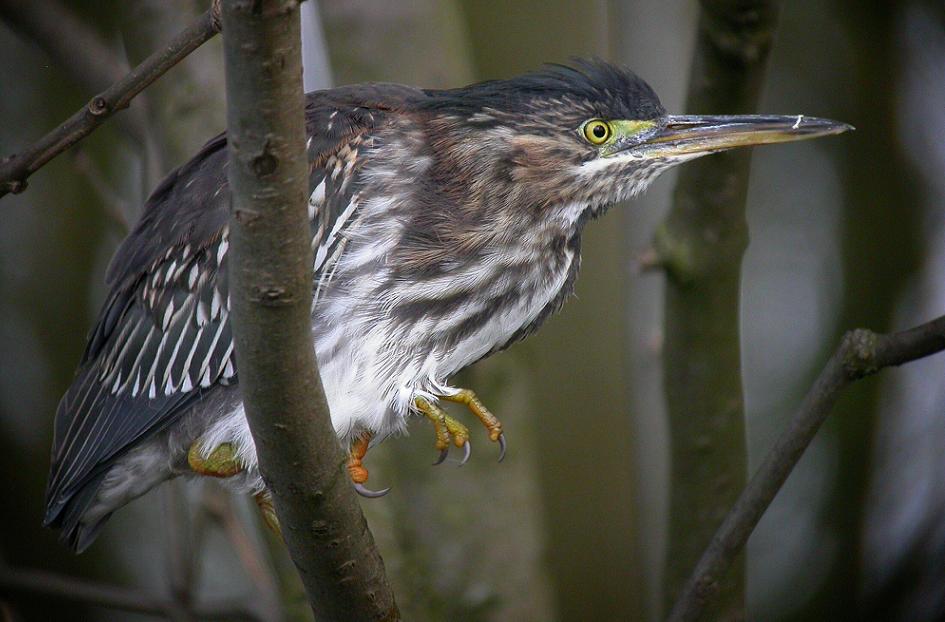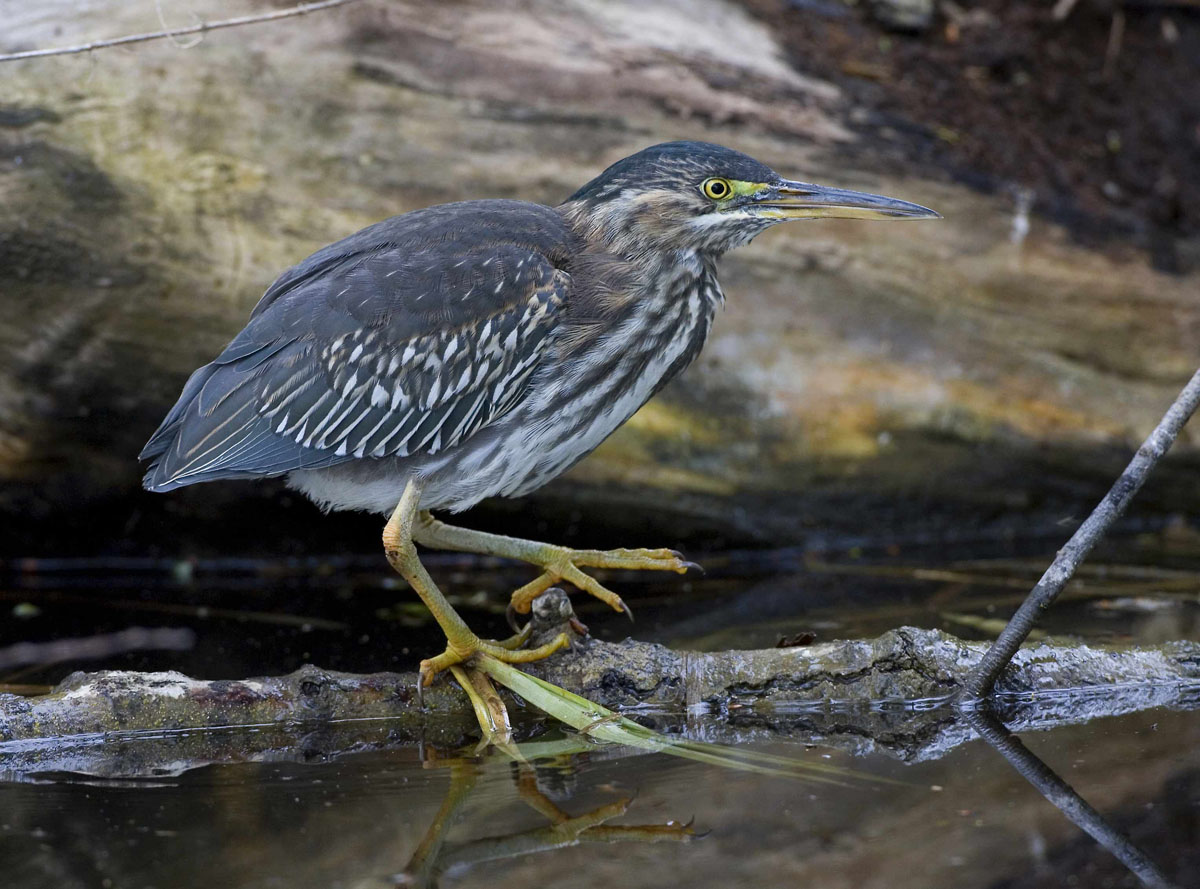
On Tuesday 25 April 2006 from 10:15 hours to 11:00 hours Rein Cremer (from
Vereniging De Oeverlanden Blijven) observed a small heron along a
path (called Jaagpad) at De Nieuwe Meer (a small wetland/lake ) in Amsterdam, Noord-Holland. He warned Paul Marcus, who announced it on the
local e-mail group for birders in Amsterdam. Next day Rein Cremer saw the bird again and identified it as a Night Heron Nycticorax
nycticorax. On Thursday 27 April 2006 Ronald van Dijk and Paul Marcus (both birders from Amsterdam) observed the bird at 11:00 hours and
again at 21:00 hours and both thought it was a Night Heron too. Ronald van Dijk had placed a picture on the e-mail group. Next morning
Laurens Steijn checked his mail, saw the picture and thought it could be a Green Heron Butorides virescens or a Striated Heron B
striata. He phoned some birders for the exact spot and decided to check it for himself. After a short search he found the bird. He
warned other birders by phone and pager-system, so the next hours (and weeks) numerous birders gathered to see this small heron, which was
feeding at very close range.
Discussion started whether it was a Green Heron or a Striated Heron and if it was a juvenile, recently fledged bird. All options were
conflicting. Both Striated and Green Herons are very rare - say non-existent - in captivity. But if it was
a Green Heron, the bird was too
young thought by some, since it was in pristine fresh plumage (all populations - also the Caribbean ones - of Green Heron breed from April to
September). It could have been a bird that was bred in late summer and had crossed the ocean in the hurricane season, e.g. Katrina. The
literature stated that this was possible (e.g. Bent, A. C. et al. 1996 - 2002. Green Heron, In Life Histories of Familiar North American
Birds, ed., Patricia Query Newforth): late fledglings will suspend there first-winter moult into the next year. But what about the apparent
freshness of the plumage? Could it be that herons will retain their feathers in better condition compared to gulls and sandpipers (my
personal opinion)?
Most birders were in favour for Green Heron, but things were getting into a stalemate position when after a month the bird was still not in
active moult.
However in September things changed. With the bird last seen on 7 June on the original spot, it was rediscovered north of Amsterdam
and had moulted into an obvious Green Heron!


29 April 2006, Nieuwe Meer, Amsterdam NH; © Marc Guyt, courtesy of Agami).

It was finally accepted as the first record for the Netherlands (cf Dutch Birding 31: 331-352, 2009). The bird was seen again in 2007 and in 2009. Elsewhere there have been 17 previous records in the Western Palearctic, including two in spring (cf Dutch Birding 28 (3): page 170, 183 & 193-194, 2006).
Now you can go to the main-index, the 2006-index or the next species, the Slender-billed Gull?